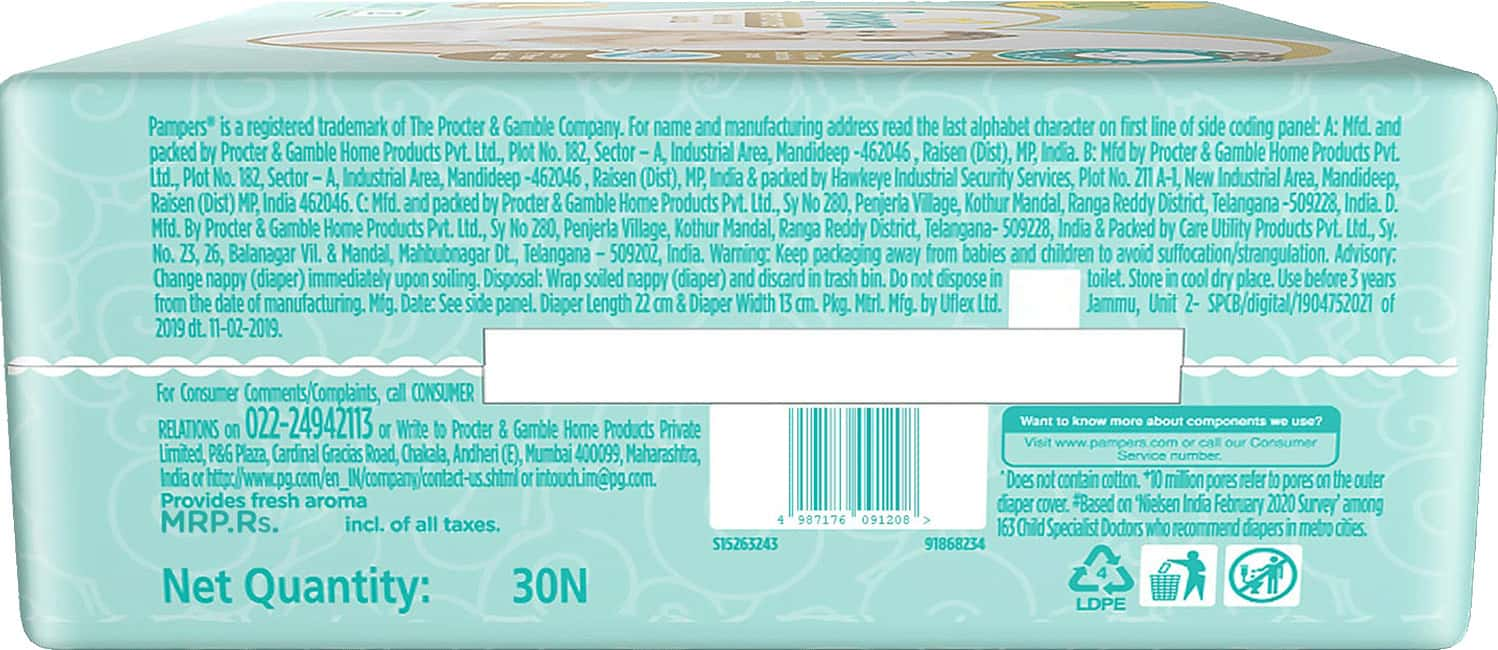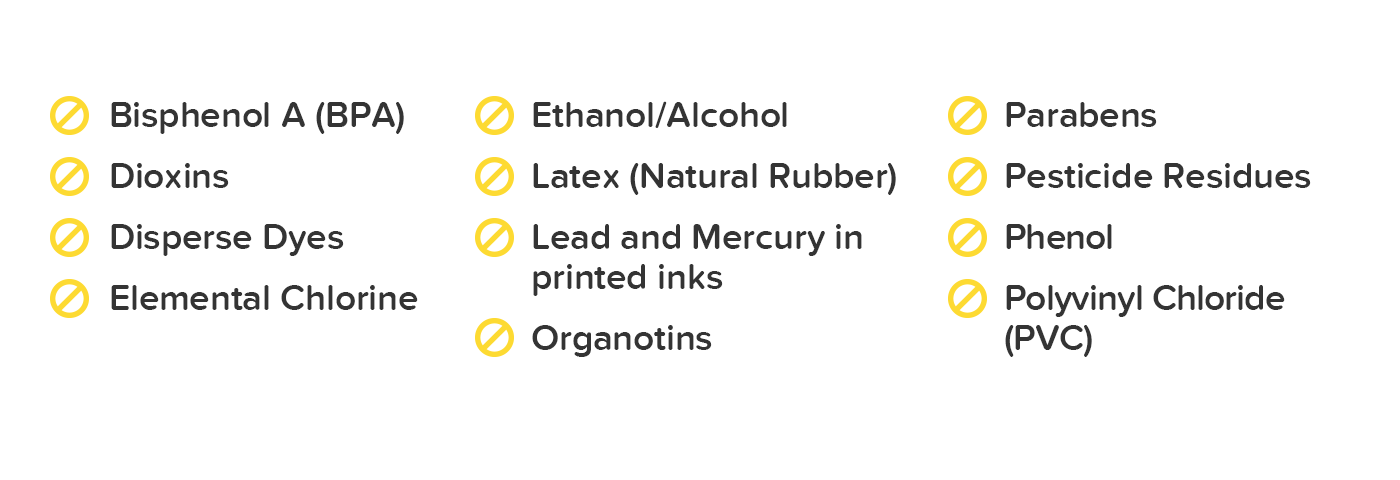There is a trend toward greener and more biodegradable disposable diapers, which we view as a step in the right direction. SVHC is a substance identified by the European Chemicals Agency that may have serious and often irreversible effects on human health and the environment. The GHS classifications for chemicals associated with products in this database may be viewed by selecting the "Advanced" button on the Chemical Ingredients tables. No diaper we tested was perfect, but the top three performing diapers in our tests are all good options from our point of view, and we'd recommend you give them a closer look:. Your baby may be fine overnight with their regular diaper, but if you notice frequent leaks, you may want to switch to an overnight diaper. Box Cincinnati OH Aloe Barbadensis leaf juice. The absorbent core is designed to pull moisture in and trap it to keep wetness away from baby to avoid rashes. However, the use of natural and sustainable materials and increased biodegradability are a virtuous combination. Usage: Diaper. In general, landfills are designed to isolate trash from the surrounding environment. This knowledge somewhat levels the playing field between cloth and disposable diapers and their perceived convenience. Several companies have stated an intention to manufacture plant-based biodegradable SAP.


Spurrier notes, emphatically, that if she knew then what she knows now about disposable diapers, she would have chosen cloth diapering for daytime use, and used a green disposable for overnight. With the above information in mind, here are some of our favorite green diapers and what they have to say about their biodegradability, or partial biodegradability. Phthalates are not tightly chemically bonded to the plastic, and as noted in the Pediatrics paper cited below, "are therefore continuously released into the air or through leaching into liquids. Babies grow quickly. Even if you fold it in a disposable diaper? Aloe Barbadensis leaf juice. Equally concerning, manufacturers are not required to disclose the chemicals used in fragrances as the FDA allows them to consider their fragrances "trade secrets.
Description
Pampers Diapers, like almost any article of clothing, will burn if exposed to flame. Dyes in diapers can be found in the colored patterns on the outside of the diaper, in the leg cuff and back elastic, and in the wetness indicator. We limit our sponsored content to relevant partners that offer products and services we believe in and use ourselves. Your Email Address. To make things even more confusing or difficult to understand or compare from one diaper to another is the terminology that each manufacturer uses. SAP is claimed to absorb up to x its weight in water and retain it. Warnings Keep away from any source of flame. This universal hazard communication system was developed to ensure that employers, employees and consumers are provided with adequate, practical, reliable and comprehensible information on the hazards of chemicals, so that they can take effective preventive and protective measure for their own health and safety. Our take on it: we like dye-free and recommend it. Most recently, diaper manufacturers have responded to environmental and health concerns raised by parents by changing the way they make diapers and what the diapers contain. Brand Information.
Pampers Ingredients and Safety Questions | Pampers
- Though Dr.
- CAS No.
- No matter how green it is, or what claims it makes concerning biodegradable materials, the environmental impact is always substantial.
This article is part of our review of The Best Disposable Diapers. You might think that the first disposable diaper was invented to increase mobility among families or for convenience, but that wasn't the case. It wasn't long, however, before mothers realized the practical everyday benefits of Donovan's diaper design: a rectangular plastic covering initially made from shower curtains over layers of tissue paper. Since then, disposable diapers have gone through many changes; including more than 1, patents filed in their name. Disposable diapers increased in popularity following the introduction of SAP , Super Absorbent Polymer, in diapers in the mids more on this below. Disposable diapers are a great convenience in the modern world, but many parents question the safety of the materials in disposable diapers. Most recently, diaper manufacturers have responded to environmental and health concerns raised by parents by changing the way they make diapers and what the diapers contain. There is a trend toward greener and more biodegradable disposable diapers, which we view as a step in the right direction. However, we're not out of the woods yet and depending on which brand of diaper you choose, the risks and impact can vary. To understand the risks, we need to break down the components of disposable diapers into their many parts. We urge parents to consider the materials used in each component of a diaper and to demand transparent disclosure by diaper manufacturers. A summary of the essential diaper components is below. Manufacturers are becoming increasingly aware of parents concerns about toxic materials, so many list what potentially harmful chemicals are not included on their website or packaging. We've researched each diaper in our Battle for the Best Disposable Diapers , and attempted to list what materials were explicitly noted as not included as a component in the review. Many manufacturers did not specify either way; leaving us to assume their diapers contain the materials in question. Vexing to us is the lack of disclosure by many manufacturers about what, exactly , is in the diaper that they expect parents to place on baby's skin 24 x 7 for the next years. We urge you to buy from manufacturers who offer complete transparency in their diaper ingredients. It is safer to buy from manufacturers who are not afraid to disclose their ingredients.
Products in this Consumer Product Information Database CPID are classified based on their composition: Substances: single chemicals Preparations: products which contain chemicals that can be easily separated during normal use Articles: products or product assemblies that do not contain chemicals that can be separated out from the product or assembly under normal or ingredients in pampers diapers use. The GHS is a system for standardizing and harmonizing the classification and labelling of chemicals. Chemicals are associated with codes that define their health, physical and environmental hazards. This universal hazard communication system was developed to ensure that employers, ingredients in pampers diapers, employees and consumers are provided with adequate, practical, reliable and comprehensible information on the hazards of chemicals, ingredients in pampers diapers, so that they can take effective preventive and protective measure for their own health and safety. The GHS classifications for chemicals associated with products in this database may be viewed by selecting the "Advanced" button on the Chemical Ingredients tables. Since this is a work in progress, GHS classifications may not be shown for all chemical ingredients. Chemical Abstracts Service Registry Number is a unique identifier for a chemical and its synonyms.



Ingredients in pampers diapers. You’ve Got Questions—and You’re Not Alone
Skip To Content. Add to cart. Nearby stores View store map. Description Your search for pure protection that works is over! Designed to help skin stay dry and healthy, Pampers Pure Ingredients in pampers diapers diapers lock wetness away from skin for up to 12 hours for outstanding leakage protection with skin-loving care. Plus, ingredients in pampers diapers, our designer, boutique prints make Pampers Pure just as precious as they are protecting. We've thoughtfully chosen all of our ingredients to care for your baby's precious skin. Our exclusive, ingredients in pampers diapers, plant-based liner plant-based and polypropylene blend is enriched with shea butter to help nourish and protect skin while our outercover is enhanced with premium cotton, making Pampers Pure Protection diapers irresistibly soft and breathable. But the ingredients we've chosen to leave out are just as important. That's why Pampers Pure Protection diapers are free of elemental chlorine, fragrance, parabens, majlepsze pieluchomajtki latex natural rubber and are hypoallergenic. The Seal of Cotton and cotton enhanced are trademarks of Cotton Incorporated. Nutrition and ingredients.
Swaddlers? Pure? Overnights? Here’s how to choose the right diaper for your baby.
Babies go through over 2, diaper changes in the first year. And if you stand in the diaper aisle for long enough, it might seem like you could choose a different diaper for each of those changes. There are Swaddlers and Pure and Overnights. How are you supposed to know which one your baby needs in this moment?
We limit our sponsored content to relevant partners that offer products and services we believe in and use ourselves. Allergens and safety warnings Keep away from any source of flame. We think the use of biodegradable materials or the claims of biodegradability of a disposable diaper ingredients in pampers diapers relevant.


Now all is clear, many thanks for the information.
Something at me personal messages do not send, a mistake....
I can not participate now in discussion - it is very occupied. I will return - I will necessarily express the opinion on this question.